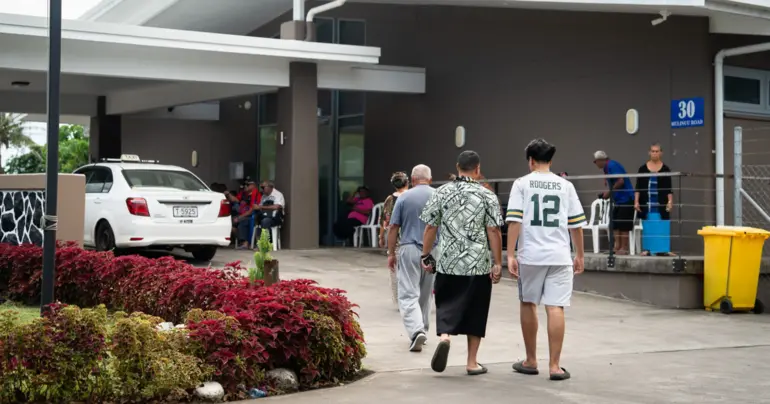Supply dent poses questions about food security
What does the price of taro have to do with anything? A lot of things. The price and supply of taro in the local market speak volumes of the state of agriculture and the ability of the nation to be self-reliant when it comes to food sources.
The reliance on imported food is getting out of hand. People would prefer to eat tin fish day after day yet the waves break on their front door and a fresh supply of fish is just a fishing line throw away.
The Samoa Bureau Statistics (S.B.S.) in its November 2023 local market survey recorded a drastic 31 per cent drop in the supply of taro locally in November compared to the previous month prompting a rise in prices by seven per cent ($5.41 per kilogram). The retail price for taro was higher at different locations.
Vegetable produce supplied to the local markets in November 2023 all experienced decreases over the previous month. Cucumber registered the largest drop of 36 per cent to 488 kilograms from the previous month, followed by Chinese cabbage supplies dropping 31 per cent to 142 kilograms and pumpkin supplies declining 26 per cent to 9,192 kilograms. Head cabbage and tomato supplies both decreased 12 per cent each to 999 kilograms and 2 per cent to 402 kilograms.
Numbers do not lie. The numbers presented by the SBS show that local cultivation of produce is at a low, and more people are increasingly buying imported food. Agriculture is a very important sector for any nation. As the population grows, so does the demand for food.
There has not been enough focus on agriculture to ensure that we can wholly rely on the local agriculture industry to sustain the nation. There is so much potential for agriculture in Samoa and there is enough land that if properly cultivated, a whole variety of crops can be produced to feed the nation.
The principles of economy are simple, if there is a shortage, then the prices go up and if the supply is abundant then prices will go down. Agriculture is the way to ensure lower food prices and a healthier nation.
Agriculture is not limited to root crops and vegetables, there is livestock and poultry as well. How much of the meat that is consumed is locally supplied? How much processed tinned meat is being eaten? Why?
The number of fishermen who supply the local market has reduced over the years. This has led to the supply being affected and because most meat and fish are imported, the prices seem to be imported as well.
Where are the incentives that will help people farm and fish more? A few decades ago, a drive past any seaside village would show small boats anchored in the shallows but how that landscape has changed. There are almost no fishing boats in some villages.
Agriculture is essential for any society to feed the population. It plays a vital role in the growth of the economy of any country and its development. Since agriculture is considered to be a provider of food, human existence depends directly on it. The importance of agriculture can be realised by the fact that the economy of many countries in the world depends solely on agriculture.
The inability of the local agricultural sector to meet the demands has resulted in the reliance on imported food, some of which are cheaply made and processed. The impact of this is shown in the increasing number of non-communicable diseases in Samoa. NCDs are also the reason why the nation has such a huge health bill.
Food and nutrition insecurity and consumption of highly processed foods are associated with poor health outcomes including increased incidence of non-communicable diseases (NCDs) such as diabetes, obesity and cardiovascular disease. Food insecurity resulting from inadequate nutrition places significant pressure on household resources and the national economy.
Increasing supply of imported unhealthy foods relative to domestic production of healthy foods, therefore, increases rates of NCDs and erodes domestic food security.
The phenomena of increasing NCD burden associated with the importation of unhealthy foods, combined with domestic food insecurity, is particularly apparent in net food importing for Samoa.
There were a lot of promises made last year in regards to agriculture but nothing tangible has been seen yet. There is so much hype built around the exportation of agricultural produce that farmers are selective about what market they are catering to and what they are producing.
The local market is ideal to sustain a lot of farms. Is there enough political will to ensure that we are first able to meet the local demand, diversify and then look towards export? The world is discussing the future and part of that aside from climate change is food security.











